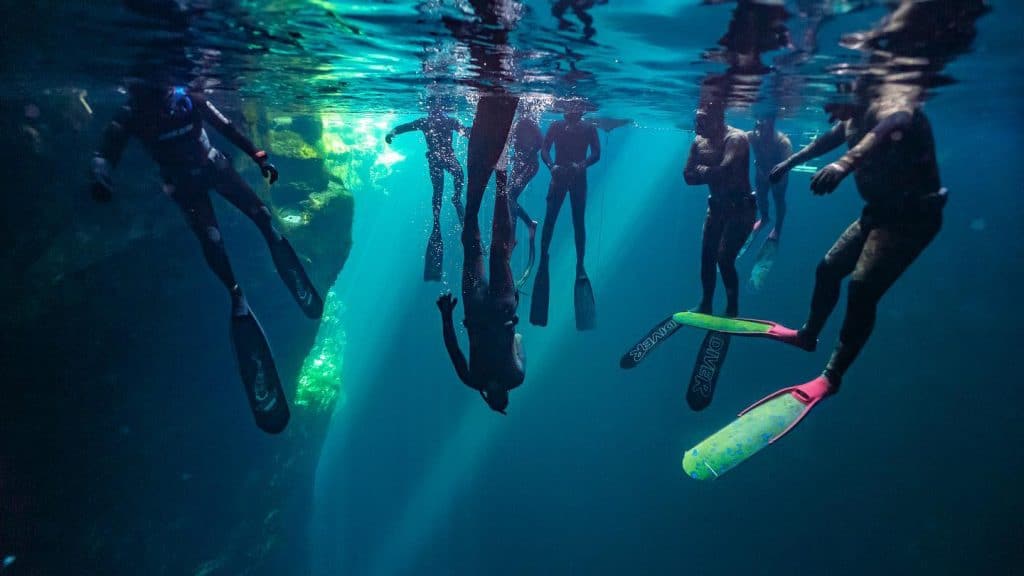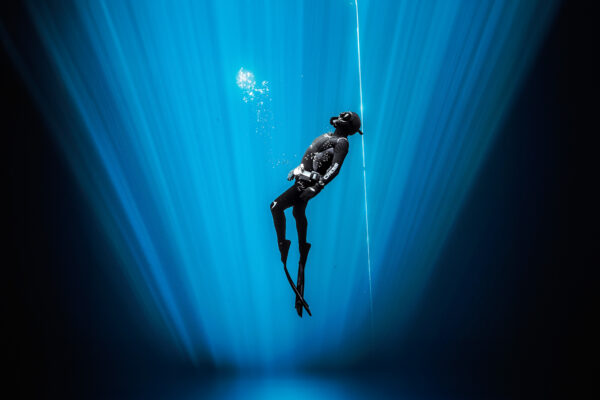Odds are if you’re reading this you have fallen madly in love with the wonderful pastime of freediving. I know exactly how you feel, it’s an amazing feeling. You want to make sure you reach your freediving goals and have fun. To do so, having your own gear is going to be a major game changer for you. So, here’s a quick guide on how to choose the best gear for you. We’ll cover masks, snorkels, fins, wetsuits and weights.
Before we get started, it’s imperative to know the safety protocols in freediving. A few crucial points are: 1) Always dive with a buddy, one up one down; 2) Take your snorkel out of your mouth before diving down; 3) stick within your known limits.
***If you have not already taken a PADI Freediving course, please do so. Save up your money for this course before buying any dive gear. The information you learn will lead you to a much safer and way more fun journey into the blue!
Masks
There are some very important points to consider when buying a mask. Before getting into it, make sure you know that it is absolutely critical you find a mask that fits you. There should be no points of pressure being pushed on and no major gaps where water can leak in. Overall, the mask needs to be comfortable for you. The last thing you want is to get a headache when you’re trying to relax in the water.
When choosing a mask for freediving, you want to look for something that is very “low profile“, meaning the mask sits very close onto your face. This is so you have a very small amount of air in the mask, an important point, because when free divers surpass about 20 metres, they will find they need to equalise their mask. Using less air for equalisation of the mask means you have more air for yourself.
Another reason being to produce the least amount of drag in the water. As a beginner, this is not something you would notice straight away, but it clearly makes a big difference in the long run.
Snorkel
Piggybacking on the last point of reducing drag in the water, you’ll find freediving snorkels are very simple and are designed with a shape that stays very close to the head.
Choose a snorkel that looks like it will fit your mouth and one of good quality that has a big breathing hole. Freediving snorkels are meant to only be used on the surface of the water when breathing up.
Wetsuit
Depending on where you live, this can be a major part of your freediving gear or not something you need to consider at all.
Freediving wetsuits differ from scuba wetsuits in the sense that they are sometimes a bit more efficient for movement in the water.
There are suits specifically designed for training, and suits that are designed for warmth. If you are frequently diving in waters 21 degrees or cooler, it is a great idea to also find gloves, socks and a hood so you can keep everything as warm as possible.
Remember, you want to be comfortable enough to slow down your heart rate through relaxing breaths that are safe for freediving (not Wym Hoff).
Fins
There is a wide range of options for freediving fins. The main thing you would have noticed about these fins are the length in comparison to scuba or snorkelling fins.
The reason freediving fins are so long is to give the diver more propulsion using less energy (thus, less air). Apart from all the epic designs, there are some main differences between the different fins. Like all freediving gear, the price (usually) reflects the quality of the product – and with fins it’s very apparent.
There are carbon fibre fins, composite fins, and plastic fins, as well as mermaid-style monofins.
Monofins are really in a whole separate category all together. For those just starting off, they are not something necessary to look too far into.
Carbon fibre is the most responsive to movement and performs the best in the water due to its flexibility, converting energy into power the most efficiently.
From there, composite plastic uses blends as well which is designed to do the same, also adding in a good option for new freedivers.
Plastic fins are another option for those starting off, though this type of fin will use more energy to kick as usually they are less flexible.
There are also options when it comes to choosing a blade flexibility: just know that softer is usually a lot easier to kick with for those just starting out.
Weights & weight belt
Before adding weights to your set up, please note: Do not make yourself negatively buoyant. If you don’t quite know what I mean by that, take a PADI Freediving Course and find out there.
You will want to be weighted neutrally so you can float at the surface and dive down with ease.
Freediving weightbelts are usually rubber instead of nylon webbing that is classically used for scuba diving. This is because rubber stretches when breathing deeply, allowing more air to come into your lungs, resulting in longer dives.



